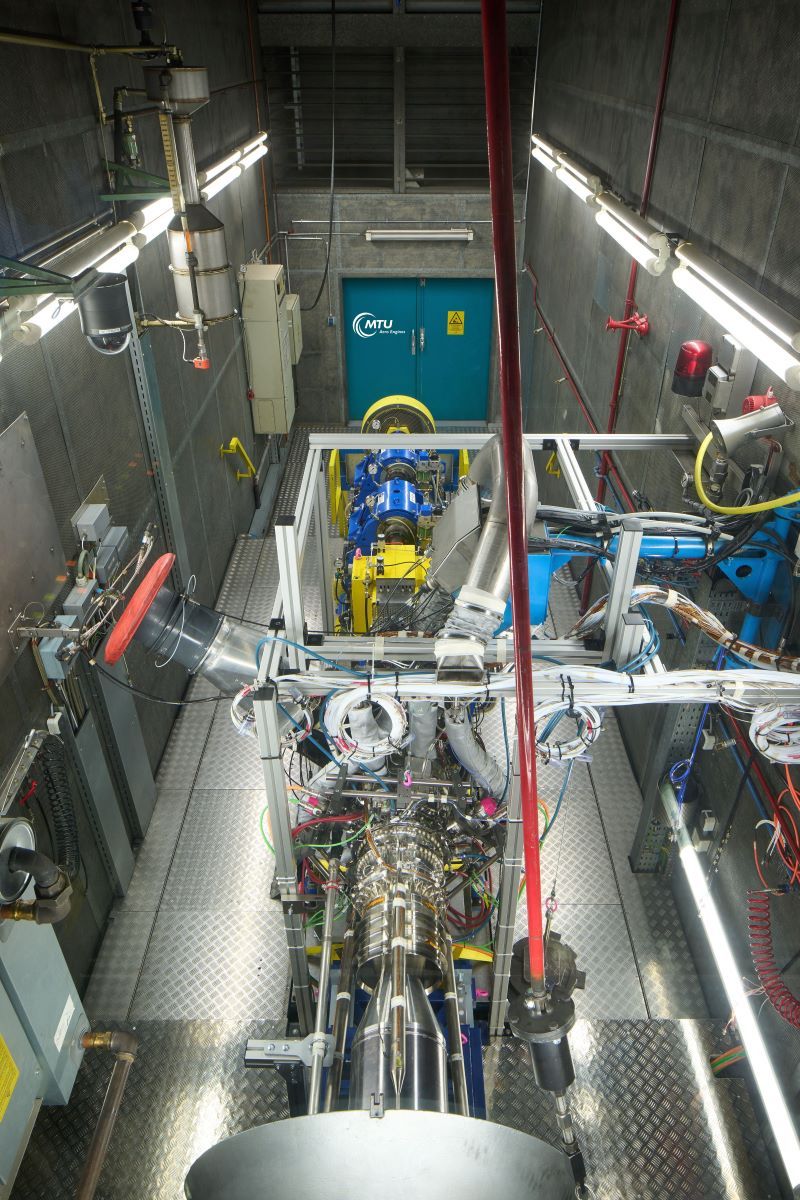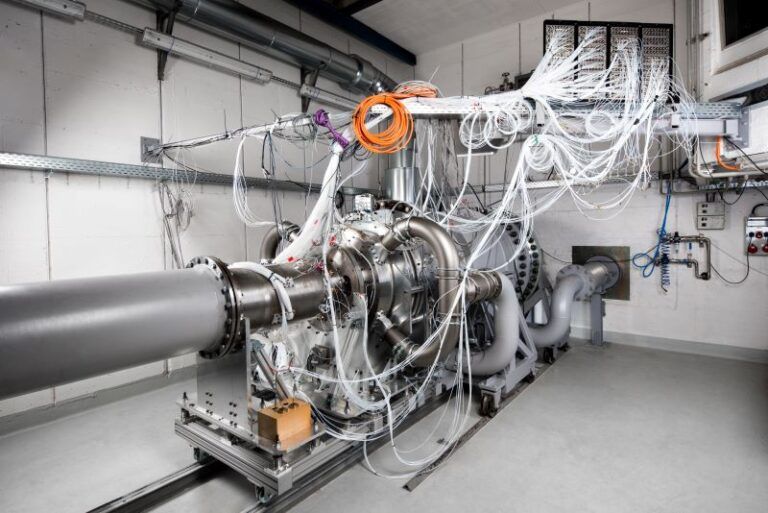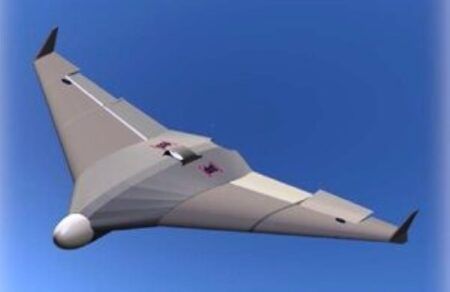MTU Aero Engines has developed major components for a next-generation geared turbofan aircraft engine.
MTU partnered with Pratt & Whitney on the development of the current generation of Geared Turbofan (GTF) engines, and now makes parts of engines such as the PW1100G used in the Airbus A320neo.
The German aero-engine maker has been working with GKN Aerospace Sweden and the German Aerospace Center (DLR) on the low-pressure turbine (LPT) and high-pressure compressor (HPC) components for a future geared turbofan engine as part of R&D projects running under the EU’s Clean Sky 2 program.
Claus Riegler, senior vice president of technology and engineering advanced programs at MTU Aero Engines said, “We focused on how our components work with their neighboring modules, and we especially want to optimize their interactions.”
Low pressure turbine
Engineers at MTU Aero Engines built the EMVAL (Engine Material Validation) engine demonstrator to validate LPT technologies. The main aim was to further improve the aerodynamics and to develop more lightweight and temperature-resistant materials using new manufacturing processes.
This LPT was integrated into an MTR390 engine from a German Army Tiger helicopter. A complete power turbine had to be redesigned, built, and attached to the core engine to integrate the newly developed technologies.
According to Riegler the EMVAL test campaign has shown that the highly heat-resistant materials developed were suitable for use. These include fiber-composite ceramics, as well as manufacturing processes for highly heat-resistant disc materials and additively manufactured components.

Two-shaft compressor rig
A two-shaft compressor rig was constructed at DLR in Cologne, Germany consisting of a low-pressure compressor, inter-compressor duct and HPC to. The focus of the program is to validate the designs of individual components and the performance of the entire compressor system.
Riegler said, “Our goal is to align the low-pressure compressor, inter-compressor duct (ICD), and high-pressure compressor even better with one another to leverage new potential for engines that are even more fuel-efficient.”
An important step was systematically measuring the flow conditions in short, steep inter-compressor ducts. For this purpose, a wind canal rig known as the ICD rig had already been builz at DLR in Cologne – the MTU Center of Competence for engine systems. Various ICD configurations were tested.
The test campaign with the two-shaft compressor rig is ongoing, with the final results available and evaluated by the end of the year.





